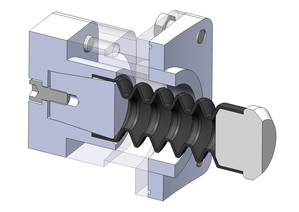Wave Protector

The TfI WaveProtector technology protects Wave Energy Converter (WEC) devices and enhances the economic proposition through a substantial reduction in operational costs and lower capital costs. It uses passive, non-linear components to control the relative movement or applied force between components of the device. End-stop problems are eliminated, making almost any device survivable in all freak wave and high sea state environments.
The WaveProtector enhances energy capture efficiency by extending the operating envelope.
The Technology
The key to the TfI passive protection technology is the ability to deliver a tailored stress-strain curve between any components of the WEC device for any desired displacements or forces. The WaveProtector technology uses both tensile and compressive solutions to control the motion between any two components and deliver customised stress-strain responses along multiple axes. The components can be optimised for displacement and/or peak and shock force control.
By tailoring material and component design, these compenents can deliver optimum performance for a specific device in a defined ocean location.
